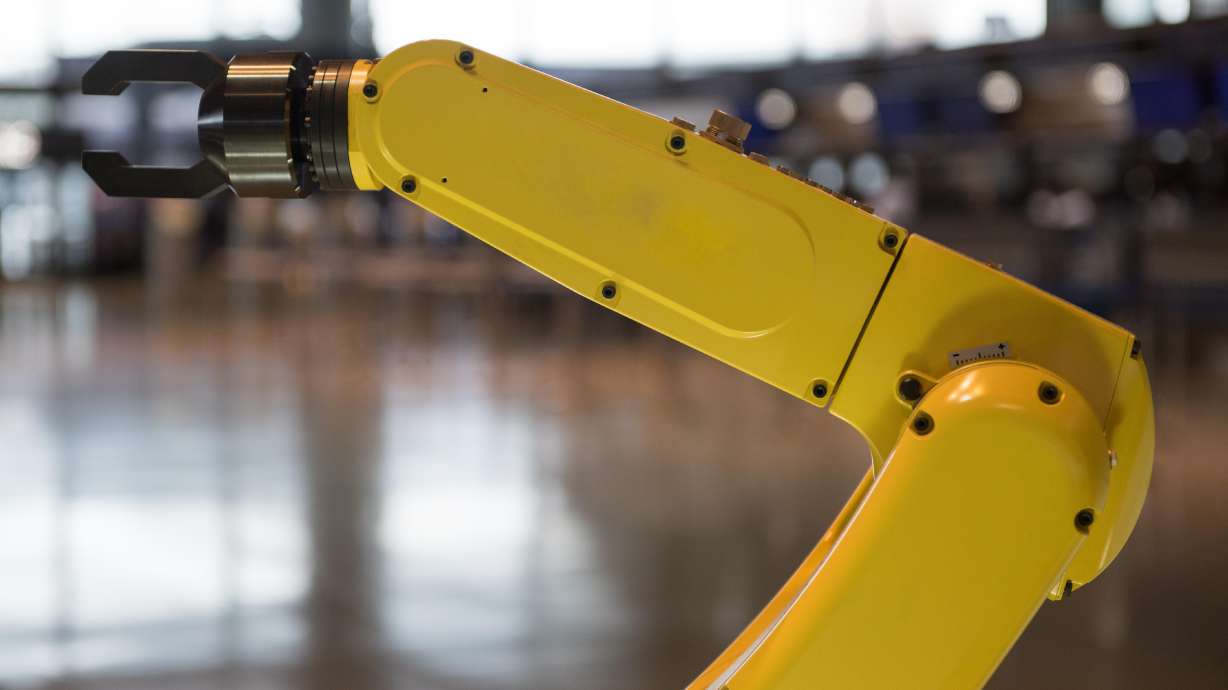Tech leaders from Palantir, Meta, and OpenAI have joined the Army Reserve, bypassing traditional training to chase transformation.



IN A NUTSHELL 🤖 Figure 02 robot achieves near-human package sorting skills with a 95% scanning success rate. 🚀 Powered by the Helix visuomotor system, the robot processes packages in just over four seconds. ✨ Integration of short-term visual memory and force feedback enhances adaptability to various parcel types. 📦 Figure 02’s advancements indicate a

A fireside with Sam Altman on June 16, 2025 at AI Startup School in San Francisco.
Sam Altman grew up obsessed with technology, broke into the Stanford mainframe as a kid, and dropped out to start his first company before turning 20.
In this conversation, he traces the path from early startup struggles to building OpenAI—sharing what he’s learned about ambition, the weight of responsibility, and how to keep building when the whole world is watching. He opens up about the hardest moments of his career, the limits of personal productivity, and why, in the end, it’s all still about finding people you like working with and doing something that matters.
Chapters (Powered by https://ChapterMe.co)
00:00 – We’re going for AGI
01:25 – Founding OpenAI Against the Odds.
05:00 – GPT-4o & the Future of Reasoning Models.
07:00 – ChatGPT Memory & the ‘Her’ Vision.
10:00 – GPT-5 & the Vision of a Multimodal Supermodel.
11:00 – Robots at Scale.
15:00 – Don’t Build ChatGPT — Build What’s Missing.
17:00 – Elon’s Harsh Email & Building Conviction.
26:00 – One Person’s Leverage in the Next Decade.
32:00 – AI for Science: Sam’s Personal Bet.
Researchers are actively exploring and revising the concept of Alcubierre warp drive, as well as alternative approaches, to potentially make superluminal travel feasible with reduced energy requirements and advanced technologies ## ## Questions to inspire discussion.
Practical Warp Drive Concepts.
🚀 Q: What is the Alcubierre warp drive? A: The Alcubierre warp drive (1994) is a superluminal travel concept within general relativity, using a warp bubble that contracts space in front and expands behind the spacecraft.
🌌 Q: How does Jose Natario’s warp drive differ from Alcubierre’s? A: Natario’s warp drive (2001) describes the warp bubble as a soliton and vector field, making it harder to visualize but potentially more mathematically robust.
🔬 Q: What is unique about Chris Van Den Broeck’s warp drive? A: Van Den Broeck’s warp drive (1999) uses a nested warp field, creating a larger interior than exterior, similar to a TARDIS, while remaining a physical solution within general relativity. Energy Requirements and Solutions.
💡 Q: How do Eric Lent’s hyperfast positive energy warp drives work? A: Lent’s warp drives (2020) are solitons capable of superluminal travel using purely positive energy densities, reopening discussions on conventional physics-based superluminal mechanisms.
Tesla is planning to launch a robo-taxi service in Austin, Texas, which is expected to disrupt the market with its competitive advantages in data collection, cost, and production, shifting the company’s business model towards recurring software revenue ## ## Questions to inspire discussion.
Tesla’s Robotaxi Launch.
🚗 Q: When is Tesla launching its robotaxi service? A: Tesla’s robotaxi launch is scheduled for June 22nd, marking a transformational shift from hardware sales to recurring software revenue with higher margins.
🌆 Q: How will Tesla’s robotaxi service initially roll out? A: The service will start with a small fleet of 10–20 vehicles, scaling up to multiple cities by year-end and millions of cars by next year’s end, with an invite-only system initially. Tesla vs. Waymo.
📊 Q: How does Tesla’s data collection compare to Waymo’s? A: Tesla collects 10 million miles of full self-driving data daily, compared to Waymo’s 250,000 miles, giving Tesla a significant data advantage for training AI and encountering corner cases.
🏭 Q: What production advantage does Tesla have over Waymo? A: Tesla can produce 5,000 vehicles per day, while Waymo has 1,500 vehicles with plans to add 200,000 over the next year, giving Tesla a substantial cost and scale advantage.



TOQUERVILLE, Washington County — The Hurricane-based robotics company IME Automation recently announced the purchase of 6.5 acres of land at Anderson Junction in Toquerville, where the company has broken ground for its new 20,000-square-foot facility.
IME Automation develops custom robotic systems for manufacturing operations worldwide. This new facility will expand its capabilities and footprint in the region.
The land was acquired approximately eight months ago during the summer of 2024, brokered by sales agent Brandon Price with the commercial real estate agency NAI Excel. Price said he delayed putting out information about the acquisition until IME Automation was completely ready to break ground.
